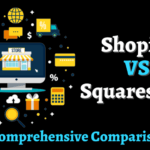Last updated on February 6th, 2023 at 01:56 pm.

Good UX is essential to creating a successful product. By focusing on the user’s experience, you can ensure that your product is easy to use and meets their needs. Meeting needs, in turn, will make your product more appealing to users and help it stand out from the competition. You can further improve your product’s UX by implementing the certificate lifecycle management process to collect and track user feedback.
1. Understand User Needs
By understanding what users want and need, companies can design products that address those needs. Does the user want to be able to find information on a website quickly? Do they need an app that is easy to navigate? How will your product save them time? Does your service save them money or make their day easier? Understanding user needs helps companies design products that meet those needs, improving the user experience.
2. Improve Usability
Making a product easy to use is one of the most important aspects of good UX. If a product is complicated or confusing for users, they will likely give up on it and look for something else. Good usability means that users can accomplish their goals quickly and easily without getting frustrated.
A product’s ease of use is improved through user testing, reviews, and feedback. Considering all three, companies can make their products more usable and improve the user experience.
3. Increase Customer Satisfaction
UX can help ensure customers are happy with the products they’ve purchased. If they are unsatisfied, they may not buy from the company again. Good customer service is essential, but it’s not always enough to keep customers happy. Companies must also focus on creating products that meet customer needs and exceed their expectations.
It also means that products can deliver on the promises that they make. For example, if a laundry detergent claims to get clothes clean in one wash, users need to be able to achieve these results. If not, users will be disappointed and may not purchase the product again.
By focusing on the user experience, companies can create products more likely to satisfy customers and keep them returning for more.
4. Reduce Support Costs
Customers will likely need more support if a product is difficult to use. They may need to contact customer service more often or visit the company’s website to answer their questions, file complaints, or process warranty claims. Having adequate customer service staff available can be costly for companies, as they must allocate more resources to support.
By making products easier to use, companies can reduce the amount of support that customers need. This, in turn, can save the company money on customer support costs. It can also free up customer service representatives to provide better service to those who need it. For example, if a product is easy to use, representatives can spend more time helping customers with complex issues.
5. Increase Sales
Making products more user-friendly can also lead to increased sales. If customers are satisfied with a product, they are more likely to purchase it again and recommend it to others. By contrast, if a product is difficult to use or doesn’t meet customer needs, users are less likely to repurchase or recommend it to others.
For example, if your organization specializes in selling software, you’ll want to make sure the software is easy to use and meets customer needs. If it’s challenging to use or doesn’t meet customer needs, they may choose to purchase a competitor’s product instead.
6. Enhance Brand Reputation
A company’s brand reputation is vital for attracting new customers and maintaining relationships with existing ones. A positive brand reputation is built by creating products that meet customer expectations. On the other hand, a negative brand reputation can result from products that are difficult to use or don’t meet customer needs.
By focusing on the user experience through the process of certificate lifecycle management, companies can improve their brand reputation and attract new customers.
7. Differentiate from Competitors
In many industries, companies compete for customers by offering similar products at similar prices. In these cases, it can be difficult to differentiate one company’s product from another. User experience can be a differentiating factor, as companies focusing on UX are more likely to create products that meet customer needs and exceed their expectations.
8. Save Time and Money
Good UX can save time and money by reducing the number of support requests, increasing sales, and making products easier to use. Users can accomplish their goals with little or no assistance when products are designed well. This means fewer support requests for customer service and less time wasted trying to figure out how to use a product.
9. Improve Employee Satisfaction
Employees are more likely to be satisfied with their jobs using well-designed, easy-to-use products. They’re also more likely to be productive and efficient when they can use products as intended.
For example, if a restaurant is looking to make its wait staff more efficient, it’ll want to ensure the point-of-sale system is easy to use. If it’s not, employees will waste time figuring out how to use it, leading to frustration and lower job satisfaction. Employees may become frustrated when they have to use products that are difficult to use or don’t meet their needs.
Final Thoughts
User experience is essential for many reasons. It can help build a better product, increase sales, enhance brand reputation, save time and money, and improve employee satisfaction. Companies focusing on UX are more likely to create products that meet customer needs and exceed their expectations.




